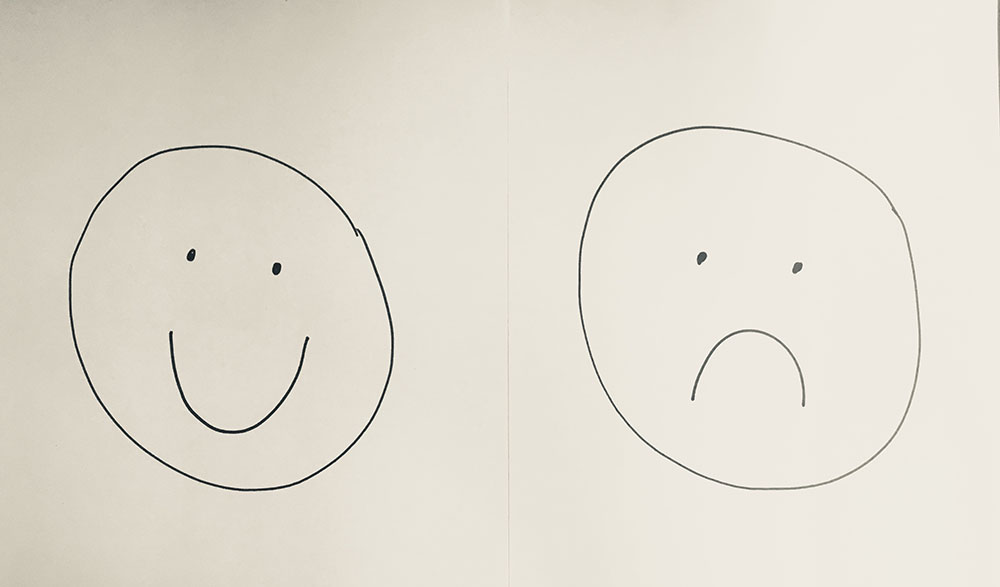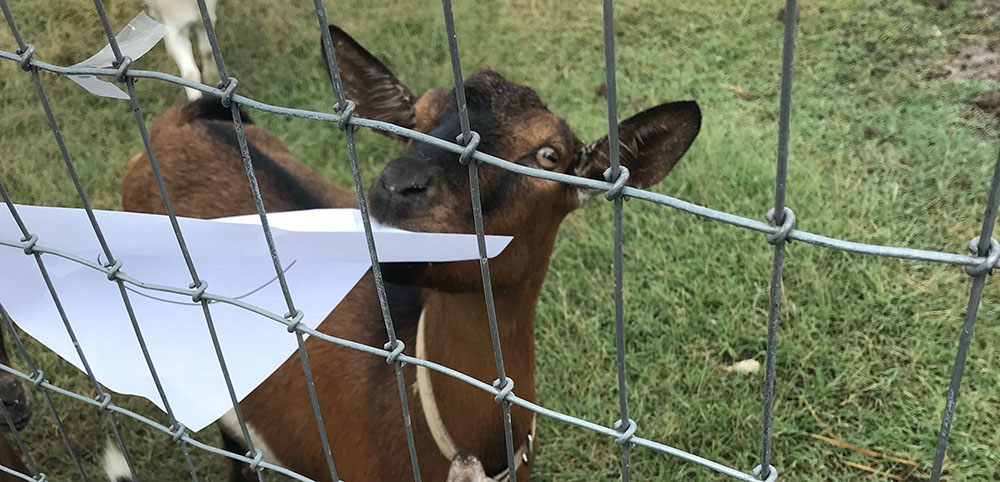Any veteran of the middle school science fair knows that ribbon-worthy experiments must be replicable. A crack team of pseudo-scientists here at Heifer International headquarters decided to put a recent study from the University of Roehampton in London to the test.
Animal behaviorist Alan McElligott was hoping to better understand if and how animals respond to human facial expression. So he taped up two photographs of the same woman, one of her smiling and the other of her looking angry. Then he brought the goats in. After testing 20 goats, he concluded that goats are more attracted to photos of happy people. McElligott reports that “51 percent went to the happy face first, compared with 30 percent who approached the angry face. The remainder didn't seem to care.”
New research from @QMULSciEng reveals that #goats prefer happy faces: https://t.co/Ovw0oLSuu0 pic.twitter.com/xh91jFqoam
— QMUL News (@QMULnews) August 29, 2018
Intrigued, we set out to test his conclusions using the goats on Heifer Farm in Little Rock.
PURPOSE: Can we replicate the results of a study that indicates goats respond positively to happy faces?
HYPOTHESIS: Goats will eat the picture of a happy face first?
EXPERIMENT: Draw a happy face on one sheet of paper and a sad face on another. Tape the pictures to the fence and observe the goats’ reaction.

ANALYSIS: The goats wasted no time dashing over to the sad face. The tallest goat snatched it off the fence with its teeth and chewed it while the smaller goats jockeyed unsuccessfully for a chance to steal a bite. All of the goats ignored the smiley face picture taped up a few feet away.
CONCLUSION: Hypothesis not supported. The goats did not eat the happy face first. In fact, they never touched it. This outcome leaves us with ambiguous results. Are Heifer’s goats sad, and therefore attracted to the frowny face? Are they offended by the frowny face and therefore eat it first?

Further study needed.